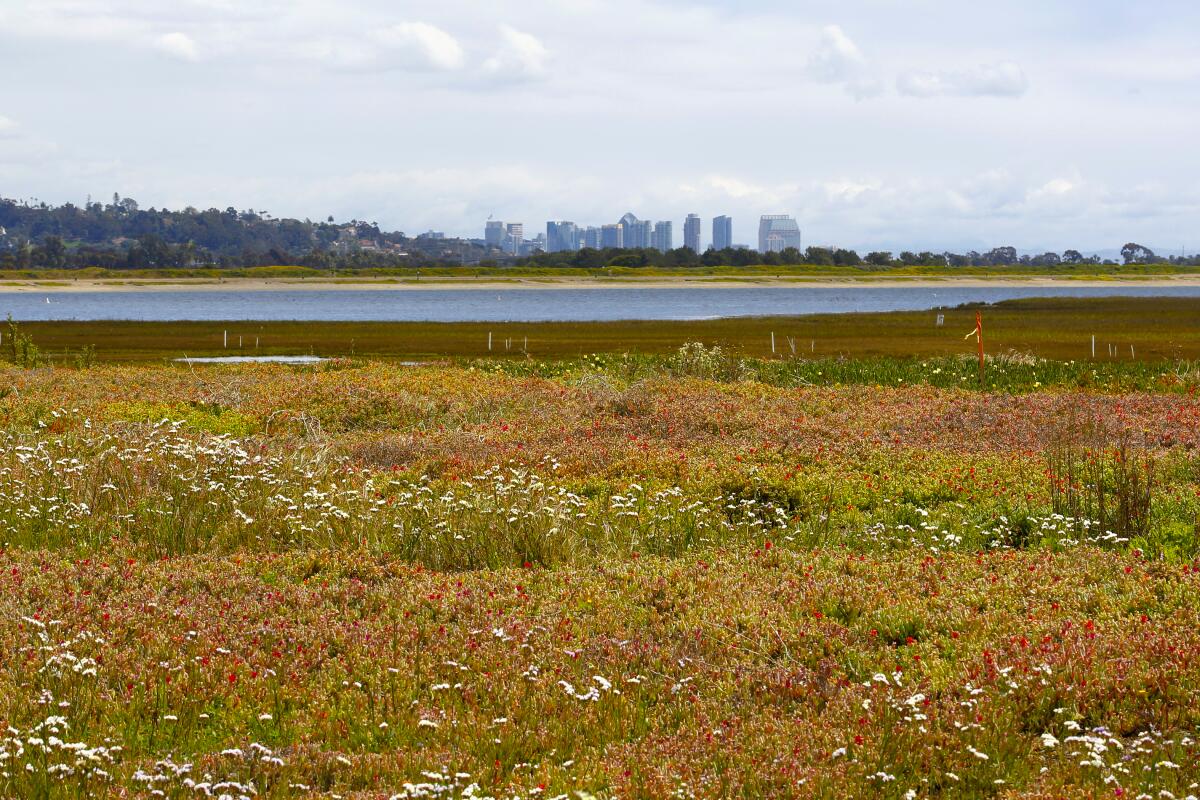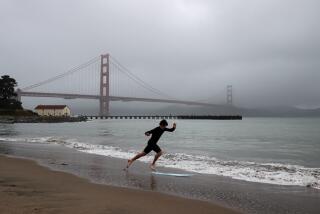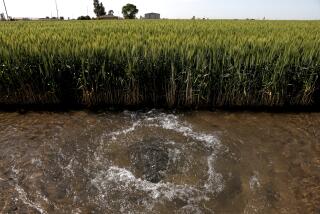Supreme Court limits EPA protection for wetlands, favoring property rights over clean water

WASHINGTON — The Supreme Court on Thursday limited federal protection for millions of acres of U.S. wetlands, ruling for property rights over clean water.
In a 5-4 decision, the court said the Clean Water Act does not forbid developing marshy areas or dry creek beds because water does not flow regularly and directly from them into a river, lake or bay.
Since the 1970s, the law has broadly protected wetlands from development because they help improve water quality and because dredge material can pollute rivers and bays.
But the court’s conservative majority said the law’s protections for the “waters of the United States” are limited to wetlands and streams that are directly connected to navigable waterways.
The court ruled in favor of a couple who were blocked from building a home on a soggy lot next to scenic Priest Lake in Idaho.
“We hold that the [Clean Water Act] extends to only those ‘wetlands with a continuous surface connection to bodies that are “waters of the United States” in their own right,’ so that they are ‘indistinguishable’ from those waters,” Justice Samuel A. Alito Jr. wrote for the majority.
That definition, which leaves out many wetlands, could have the greatest effect in the West and other areas where streams are dry for part of the year.
Conservative Justice Brett M. Kavanaugh joined liberal Justices Sonia Sotomayor, Elena Kagan and Ketanji Brown Jackson in dissenting and saying that Congress intended to protect more wetlands from development, including marshy areas that are near rivers or streams but are not directly connected to them.
The decision in Sackett vs. EPA is a victory for landowners and developers and a defeat for environmentalists.
Sam Sankar, vice president of programs at Earthjustice, denounced the decision, saying it “undoes a half-century of progress generated by the Clean Water Act.”
“Almost 90 million acres of formerly protected wetlands now face an existential threat from polluters and developers,” he said. “This decision is the culmination of industry’s decades-long push to get conservative courts to do what Congress refused to do.”
West Virginia Atty. Gen. Patrick Morrisey welcomed the ruling.
“We now have a clearer definition for ‘waters of the United States,’ and we’re pleased the Supreme Court ruled in a way that state lands and waters are less subject to the whims of unelected bureaucrats,” he said. “Today is a big day for farmers, home builders, contractors, property owners and those who care about economic activity not being subject to overreach by the federal government.”
All nine justices agreed the Idaho couple’s vacant lot was not a protected wetland, but they disagreed on how to define the term.
Alito, joined by four other conservative justices, adopted a view espoused by the late Justice Antonin Scalia that the federal law protected only connected bodies of waters, not adjacent wetlands.
But Kavanaugh and the court’s three liberals said that Congress and the court had taken the view for decades that wetlands that were adjacent to rivers or bays were protected.
“By narrowing the Act’s coverage of wetlands,” Kavanaugh wrote, the “Court’s new test will leave some long-regulated adjacent wetlands no longer covered ... with significant repercussions for water quality and flood control throughout the United States.”
San Francisco Baykeeper, a watchdog group, said the ruling “will jeopardize the health of San Francisco Bay and remove protection from many of the wetlands around the Bay.”
Thursday’s decision effectively overturns a moderate position set by Justice Anthony M. Kennedy in 2006. He said the law should protect marshy areas or dry creek beds that sometimes send water flowing into a river or bay, rejecting Scalia’s view that the EPA could protect only continuously flowing bodies of water.
But with the addition of Justices Neil M. Gorsuch and Amy Coney Barrett, the court has adopted Scalia’s view and cast aside Kennedy’s.
Thursday’s ruling limiting the EPA does not prevent California or other states from protecting their wetlands. But developers, home builders and farmers argue that they should not be prevented from using land that includes marsh areas.
The Clean Water Act was adopted in 1972 to prevent pollution from being discharged into the “navigable waters” of the United States, but ever since, there has been disagreement over the extent of federal authority.
Because water flows downhill, environmental regulators said they needed broad authority to prevent discharges into small streams or wetlands that drain into waterways. The prohibited pollutants included gravel and sand, which cannot be dumped into wetlands without a permit from the Army Corps of Engineers or the EPA.
But property rights advocates argued that the EPA had exceeded its authority. They said overzealous federal agents were preventing property owners from using their land.
Thursday’s ruling marked the second victory in the high court for the Idaho couple, Michael and Chantell Sackett.
In 2004 they bought a lot that sat about 300 feet from Priest Lake. Near the back of the property were wetlands that drained into the lake, and part of the lot was marshy. The couple dumped gravel and sand in a soggy area as a first step toward building a home on the lot.
Their real estate broker had warned them that the lot contained wetlands, and in 2007, an EPA official told them they needed a permit before they could develop the lot to build a home.
The Pacific Legal Foundation took up their case, and in 2012 won a unanimous Supreme Court ruling that allowed them to challenge the wetlands designation in court before undertaking the costly process of obtaining a permit.
In their second challenge, a federal judge in Idaho and the 9th Circuit Court of Appeals in San Francisco ruled against the couple, holding that their soggy lot was a protected wetland.
Appealing to the Supreme Court, attorney Damien Schiff said that “the Sacketts’ property contains no stream, river, lake, or similar water body,” and that their “ordeal is emblematic of all that has gone wrong with implementation of the Clean Water Act.”
In defense of the EPA, Justice Department lawyers argued that “wetlands such as swamps, bogs, marshes and fens ... play a critical role in regulating water quality. They provide flood control and trap and filter sediment and other pollutants that would otherwise be carried into downstream waters.”
More to Read
Get the L.A. Times Politics newsletter
Deeply reported insights into legislation, politics and policy from Sacramento, Washington and beyond. In your inbox three times per week.
You may occasionally receive promotional content from the Los Angeles Times.











